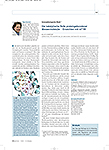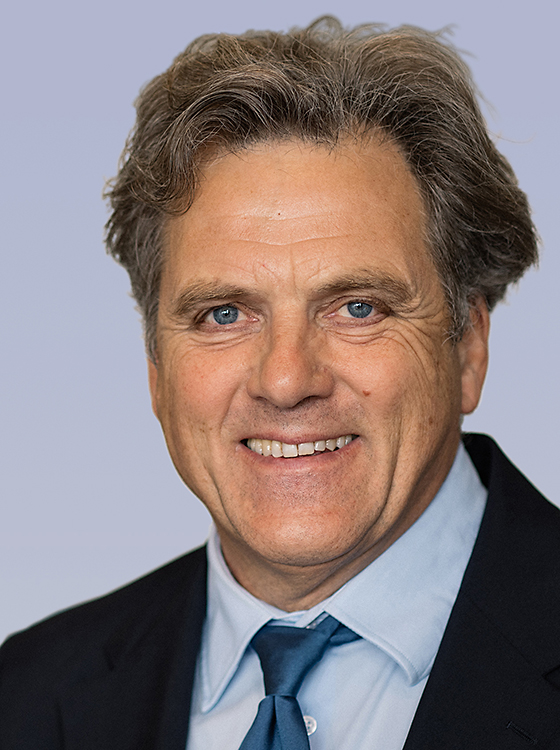
News
25.09.2023
Klaus Gerwert receives the Innovation Prize of the State of North Rhine-Westphalia 2023
|
|
Presentation of the prize winner at the event on September 25th, 2023
© Ministry for Economic Affairs, Industry, Climate Protection and Energy of the State of North Rhine-Westphalia / Mohr Events GmbH
|
|
|
Report on RTL West from September 26th, 2023
© RTL West
|
|
|
Report on SAT.1 NRW from September 26th, 2023
©SAT.1 NRW
|
21.09.2022
World Alzheimer's Day 2022 Report
|
|
World Alzheimer's Day 2022 Report
ARD-Fernsehen, Tagesthemen (in German)
|
03.08.2022/21.07.2022
Bochum researchers develop sensor for early detection of Alzheimer's - Studio talk: Klaus Gerwert, biophysicist
|
|
Bochum researchers develop sensor for early detection of Alzheimer's - Studio talk: Klaus Gerwert, biophysicist
WDR-Fernsehen, Aktuelle Stunde, "Lokalzeit Ruhr" (in German)
|
Press release:
01.06./08.06.2021
Reports about the Alzheimer's sensor developed by us on German television in the programs "Leschs Kosmos" (ZDF) and "NANO" (3sat).
19.04.2021
We congratulate Julia Stockmann on passing her doctoral examination!
14.10.2019
press release:
28.06.2019
press release:
link to paper:
17.06.2019
article in FOCUS-magazine:
03.06.2019
|
|
Opening ceremony of the research building "ProDi"
WDR-Television, Aktuelle Stunde, "Lokalzeit Ruhr"
|
press release:
02.05.2019
press release:
link to paper:
29.04.2018
article in WELT AM SONNTAG:
12.04.2018
article on ALZFORUM (online):
06.04.2018
press release:
link to paper:
|
|
Innovation Award Ruhr 2006
The catalytic role of protein-bound water molecules
-
Insights with trFTIR
The research group led by Prof. Dr. Klaus Gerwert (Chair of Biophysics) at the Ruhr University Bochum succeeded: They were able to resolve the precisely coordinated interaction of individual water molecules in the nanoworld of a protein - with the help of the trFTIR (time-resolved FTIR) spectroscopy they developed. This means that the role of biological water in protein function has to be reassessed. This development, which attracted international attention, was awarded a recognition prize of the Innovation Award Ruhr in April 2006.
The linked article from Biospektrum 5/2006 (12) 563 (in German) gives a short summary of the awarded technology.
|

|
|

Prof. Dr. Klaus Gerwert
Head of Department
|
Mission
At the Department of Biophysics, we investigate protein dynamics at different scales. The understanding of protein dynamics is not only of academic interest in basic research, but also has a great application potential in medicine. Disorders of protein dynamics can cause serious diseases. Almost all types of cancer and neurodegenerative diseases are triggered by oncogenic mutations or misfolding of proteins. Hence, these protein modifications are suitable biomarkers for the early detection of cancer or neurodegenerative diseases on the one hand. On the other hand, the modified proteins are targets for drugs in precision medicine.
Example Ras protein
In the scheme above, the Ras protein is exemplarily shown at different scales. It transmits external growth signals to the nucleus. Oncogenic mutations within the GTP-binding pocket of the Ras protein lead to a disturbance of the switch-off function so that Ras constantly stimulates the growth signal transduction and thereby induces uncontrolled growth signals in the nucleus. The permanent activation of the growth signal transduction pathway ultimately leads to an uncontrolled cell growth, so that in the long term tumors develop in the cell cluster, namely the tissue. Oncogenically mutated Ras protein is present many tumors.
Methodical approach
To study protein dynamics at atomic level, a wide range of biochemical and molecular biological methods are orchestrated with molecularly resolving biophysical methods. In particular, our newly developed methods for label-free time-resolved infrared difference spectroscopy are applied on recombinant proteins. The experimental results are evaluated with biomolecular simulations. This approach eventually yields molecular reaction mechanisms of proteins with highest spatial and temporal resolution. Not only static images of the protein ground state but movies of the protein function are created. For example, this approach was used to elucidate the molecular reaction mechanisms of bacteriorhodopsin and the Ras protein.
Furthermore, (body) fluids are measured using the ATR technology. Especially misfoldings of protein biomarkers are determined that are bound to the functionalized surface of the ATR crystal. Based on the ATR technology, for example, an immunosensor was developed for the early detection of Alzheimer's disease in blood samples.
Living cells are analyzed in a label-free manner using Raman and CARS imaging. In particular, the effect of drugs (Companion diagnostics) on the cell function is represented with spatial distribution of the active substances.
Tissue is classified by label-free FTIR imaging. In particular, tumor tissue is characterized in an automated and label-free differential diagnostic way. Finally, protein biomarkers can be identified by combination with molecularly resolving proteomic analysis.
Third-party funding and cooperation partners
Most of the work is third-party funded (DFG, BMBF, EU) and is mainly carried out within the framework of large consortia. The basic scientific research is carried out in SFB 642 (spokesman K. Gerwert) and the translationally and clinically oriented research within PURE (spokesman K. Gerwert). The department has national and international cooperation partners, in particular the ISAS and the Max Planck Institute for Molecular Physiology in Dortmund as well as the SIBS in Shanghai.
Back to startpage





